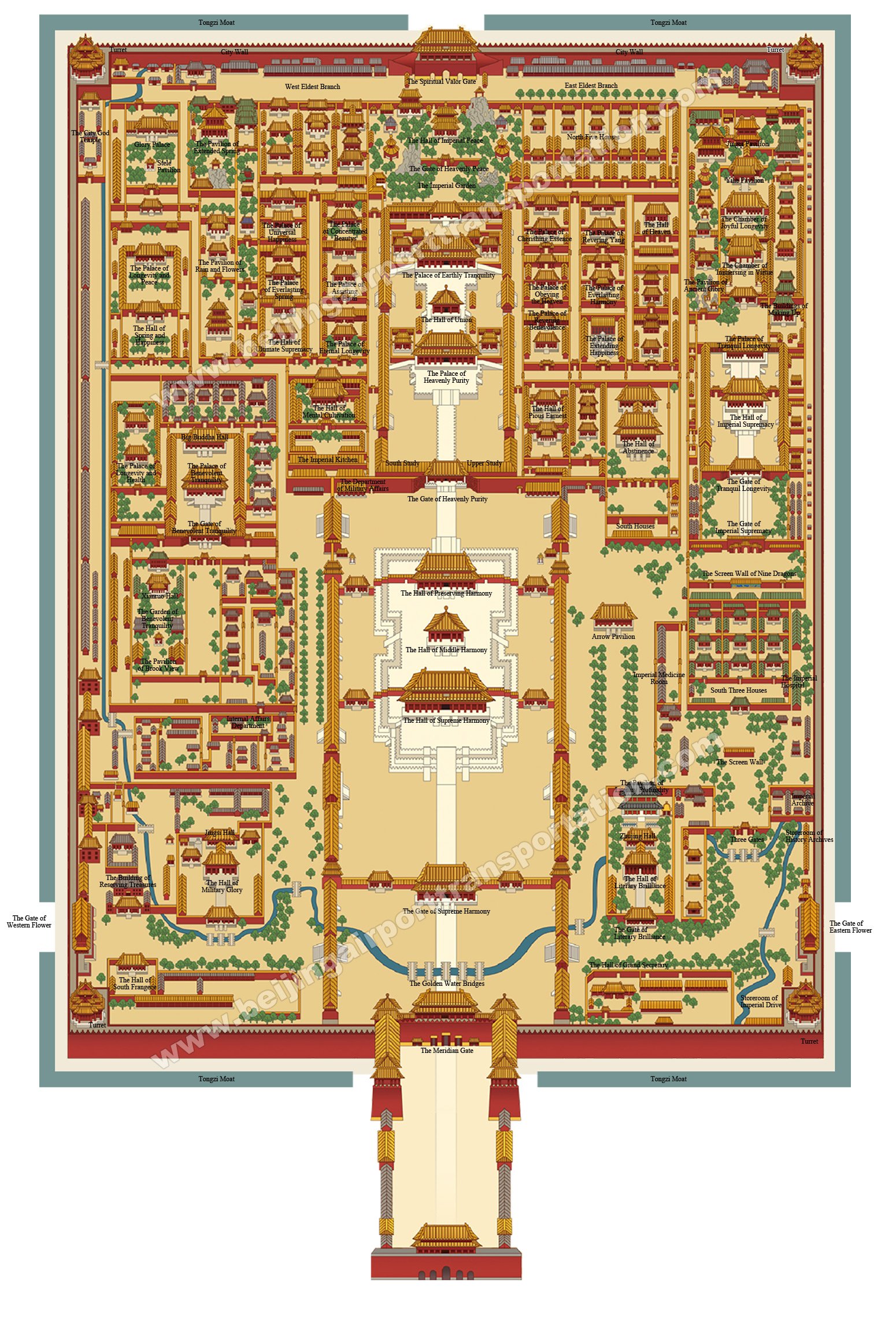Why is the forbidden city called the forbidden city?
Why is the Forbidden City called the “Purple Forbidden City”?

The Forbidden City, also known as the Imperial Palace, served as the royal residence during the Ming and Qing dynasties. It was constructed between 1406 and 1420 and witnessed the reign of 24 emperors. But why is it called the “Purple Forbidden City”?

The “Arrival of Purple Qi” Theory
Legend has it that when the ancient philosopher Laozi passed through Hangu Pass, a purple qi (auspicious energy) appeared from the east, witnessed by the gatekeepers. Shortly after, Laozi arrived riding a green bull, and the gatekeepers recognized him as a sage. They requested Laozi to write the famous “Tao Te Ching.” Therefore, purple qi was considered an auspicious omen, heralding the presence of an emperor.

In ancient times, auspicious energy was referred to as “purple qi,” and places where immortals lived were called “Purple Seas,” and immortals were known as “Purple Emperors.” The arrival of purple qi symbolized good fortune, and “purple” represents this idea. The Forbidden City, where the emperor resided with strict access restrictions for common people, was thus named the “Purple Forbidden City.”

The “Purple Pole Star” Theory
According to legend, the Purple Pole Star is located at the center of the celestial sphere and is one of the most important stars in the sky. It gets its name from its purple-colored radiance and symbolizes the highest status and power.

In ancient China, the Purple Pole Star was seen as a symbol of the heavenly palace and auspiciousness, representing power, status, and glory. It was associated with the coordinates of the Heavenly Emperor.
Only the emperor could liken himself to the Purple Pole Star because the emperor was considered the representative of the Heavenly Emperor and possessed the highest status and power. Therefore, the palace was also called the “Purple Forbidden,” symbolizing the emperor’s supreme position and authority.
The “Five Elements” Theory
Additionally, the name of the Forbidden City is related to the ancient theory of the Five Elements and Five Colors.
In ancient times, the Five Elements theory believed that the world was composed of five elements: metal, wood, water, fire, and earth. These elements were also associated with five colors, including white, green, red, black, and yellow.

The central axis corresponds to the element of fire, known as the Vermilion Bird, and the colors associated with fire include “red” and “purple.” Purple was regarded as one of the colors representing the Five Elements. The Forbidden City is located precisely on the central axis, associated with fire, i.e., the “Vermilion Bird,” hence the name “Purple Forbidden.”

Therefore, naming the palace the “Purple Forbidden City” emphasized its supreme position and power according to the ancient Five Elements theory.
The “Son of Heaven” Theory
Emperors regarded themselves as the sons of heaven, or the “Son of Heaven.” Heaven was considered the dwelling place of the Heavenly Emperor, and naturally, it was also the dwelling place of the Son of Heaven. Hence, the palace where the emperor resided was called the “Purple Palace,” also known as the “Purple Microcosm.”

Ancient emperors often referred to themselves as Daoist immortals, and Daoist immortals resided in places known as the “Purple Mansion,” “Purple Terrace,” and “Purple Pavilion.” The emperor also referred to his residence as the “Purple Terrace” and “Purple Pavilion.” The imperial chariot was called the “Jade Carriage,” also known as the “Purple Wheel.”
With chariots named “purple,” palace buildings named “purple,” it was fitting that the city within be named the “Purple Forbidden City.”
The “Stellar Path” Theory
In ancient times, the stars in the sky were categorized into the Three Luminaries and the Twenty-Eight Mansions.
The Three Luminaries included the Grand Duke, the Celestial Market, and the Purple Star, with the Purple Star situated in the middle, representing the Son of Heaven.

When the Son of Heaven was compared to the Purple Star, the Purple Star became the Yellow Pole, and all the palaces of emperors were referred to as the “Purple Pole,” “Purple Forbidden,” and “Purple Constancy.”
From the architectural layout of the Forbidden City, the Hall of Supreme Harmony symbolizes “heaven” and is situated at the center of the Forbidden City. The Palace of Heavenly Purity and the Hall of Earthly Tranquility represent “heaven” and “earth,” closely connected to each other. The two gates on either side, the Gate of the Sunlit Days and the Gate of the Lunar Radiance, symbolize the sun and the moon. The six palaces to the east and west represent the twelve constellations.

The designation of the Forbidden City as the “Purple Forbidden City,” when viewed from the perspective of the “stellar path,” aligns perfectly with its architectural design.